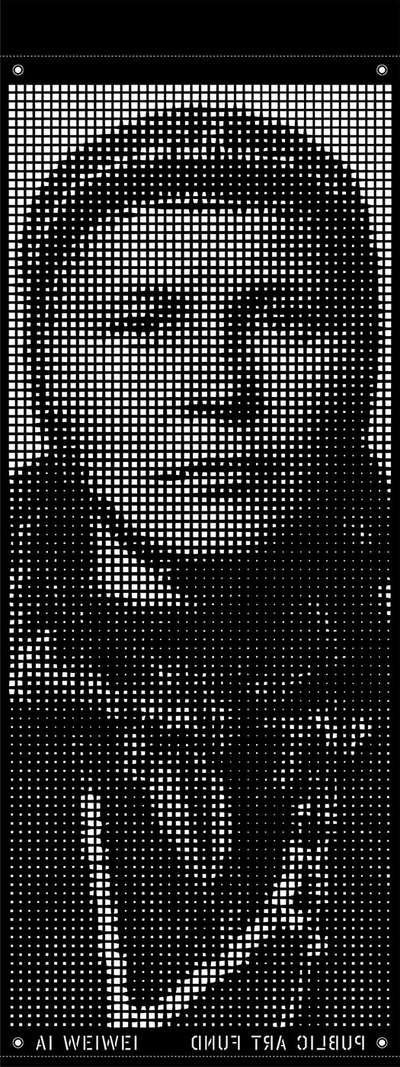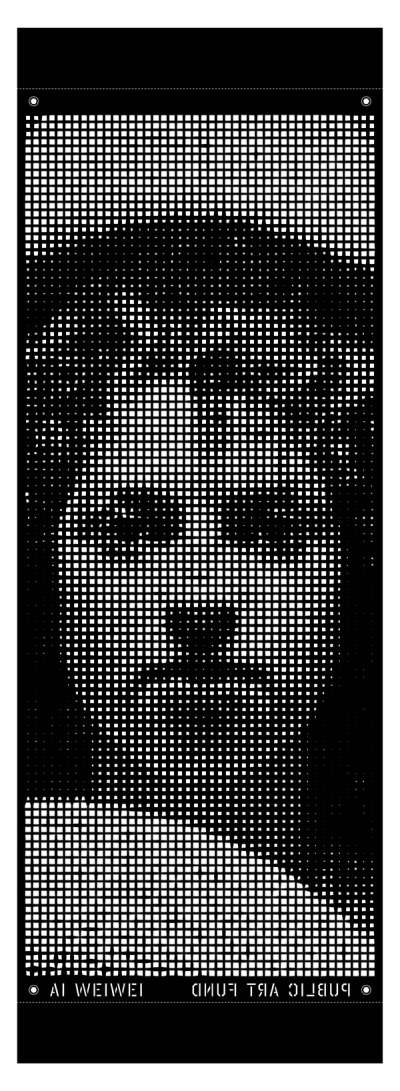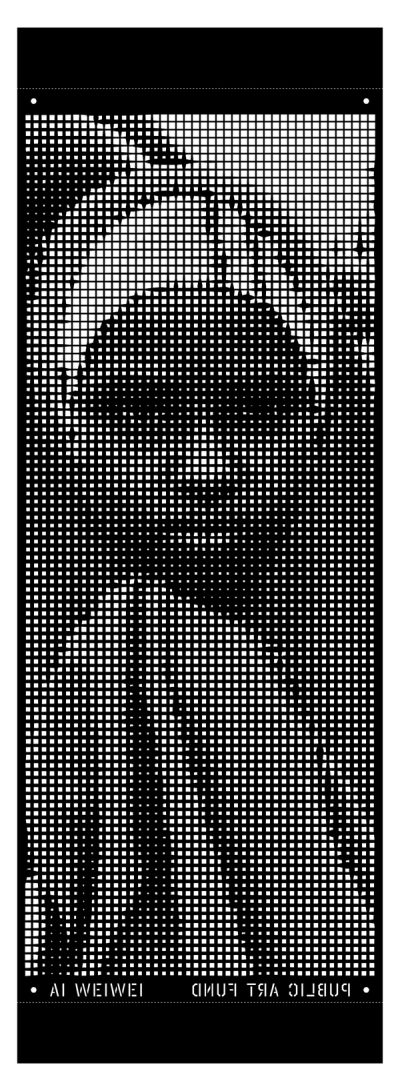Portrait
Banners
Ai Weiwei's Portrait Banners (2018) is a print portfolio comprising six black and white portraits, blown up onto laser-cut vinyl banners. Through these images, Ai Weiwei considers individual agency, collective power, and censorship, while prompting viewers to reflect on socio-political issues and the diversity of humanity.
Ai Weiwei Portrait Banners for sale
Sell Your Art
with Us
with Us
Join Our Network of Collectors. Buy, Sell and Track Demand
Meaning & Analysis
Ai Weiwei's Portrait Banners (2018) is a remarkable print portfolio that comprises six black and white portraits, each blown up into laser-cut vinyl banners. In this series, Ai Weiwei explores the profound themes of individual agency, collective power, and censorship, while prompting viewers to engage critically with socio-political issues and contemplate the vast diversity of humanity.
Ai Weiwei produced the portfolio of six banners after an installation created as part of the “Good Fences Make Good Neighbours” exhibition he conducted on the streets of New York, with the help of Public Art Fund in late 2017 to early 2018. On that occasion, Ai Weiwei originally produced a series of 200 portrait banners, which occupied places on lamp posts across the city. The banners used, as their source material, images by Augustus Sherman, an amateur photographer and Bureau of Immigration clerk at Ellis Island, the United States’ main port of immigration at the time. Doubtless, Ai Weiwei sensed his own affinity with Sherman, who also took an interest in the waves of mass migration that characterise our age. Sherman's began as a personal interest in the diverse origins of the individuals he processed as part of his day job, that lead him to make photographic portraits of these people on his own initiative, creating a vast and diverse archive of distinctly humane portraits. Of the 200 banners initially produced for the project, Ai Weiwei chose to reproduce Banners 13, 25, 50, 51, 90 and 200 in editions of 500 each for the portfolio collected here.
The decision to produce large, propaganda or advertising-inspired banners to display for these portraits is a highly deliberate artistic decision on Ai Weiwei's part. Employing this format, Ai Weiwei draws upon the visual language and iconography commonly associated with public displays of power and authority. The banners evoke a sense of spectacle, demanding attention and emphasising the significance of the individuals portrayed. This intentional juxtaposition of the monumental and the personal challenges conventional notions of power dynamics and disrupts established narratives. Within the Portrait Banners series, Ai Weiwei carefully selects a diverse range of individuals to portray. These subjects come from various backgrounds and walks of life, symbolising the vast tapestry of human existence. By presenting this broad spectrum of humanity, Ai Weiwei invites viewers to reflect on both the shared and heterogenous struggles, triumphs, and complexities that unite us all. Each portrait within the series captures the essence of the individual, highlighting their unique stories and experiences.
Ai Weiwei's choice to emphasise, through the laser-cut technique, the contrastive simplicity of black and white photography adds a timeless quality to the images, emphasising the universal nature of human emotions and struggles that transcend specific temporal contexts. The absence of colour allows viewers to focus on the facial expressions, gestures, and subtle nuances that reveal the depth and complexity of each person's identity.
Furthermore, Ai Weiwei's Portrait Banners serves as a critique of censorship and control. The artist, known for his activism and outspokenness against oppressive regimes, uses this series to challenge restrictions on freedom of expression and the suppression of individual voices. By displaying these powerful portraits publicly, Ai Weiwei reclaims the public space and confronts the mechanisms of censorship head-on. The choice to present the portraits as large-scale banners magnifies their visibility, demanding attention and provoking dialogue about the societal constraints that hinder authentic representation and the free exchange of ideas.





